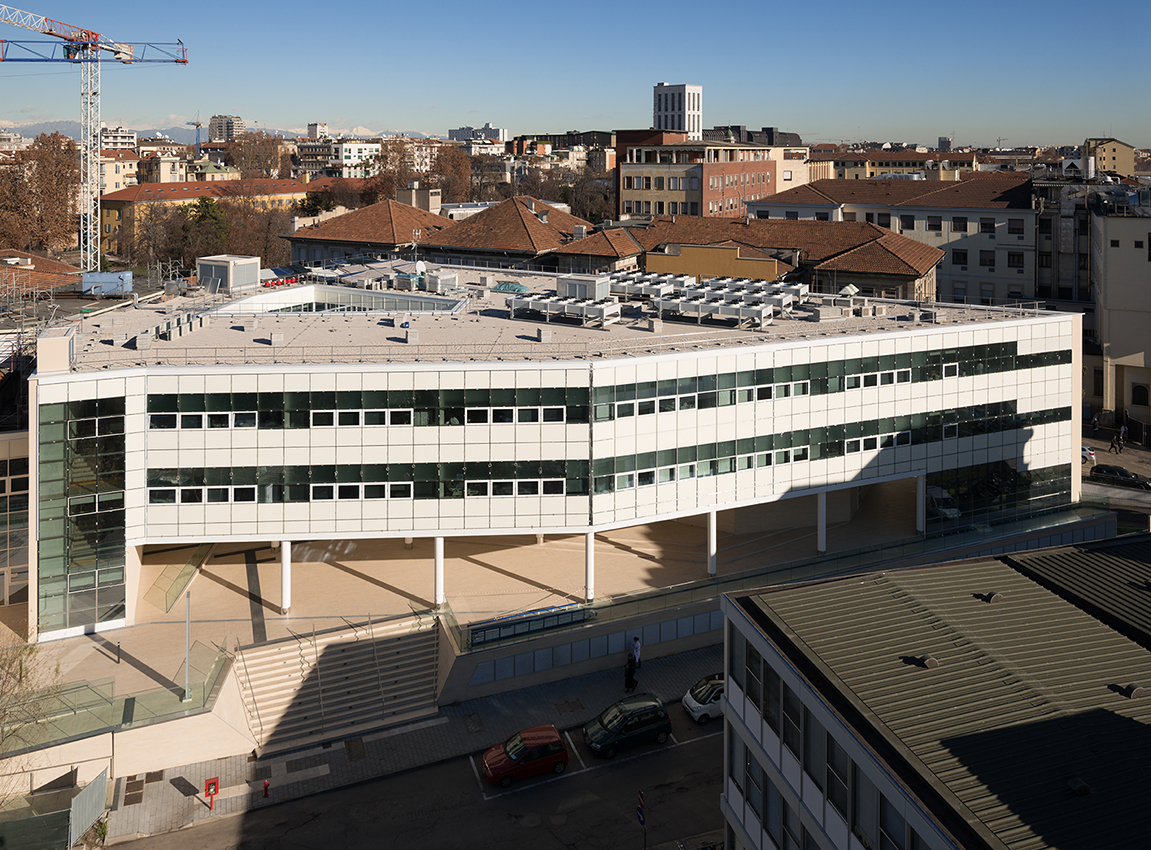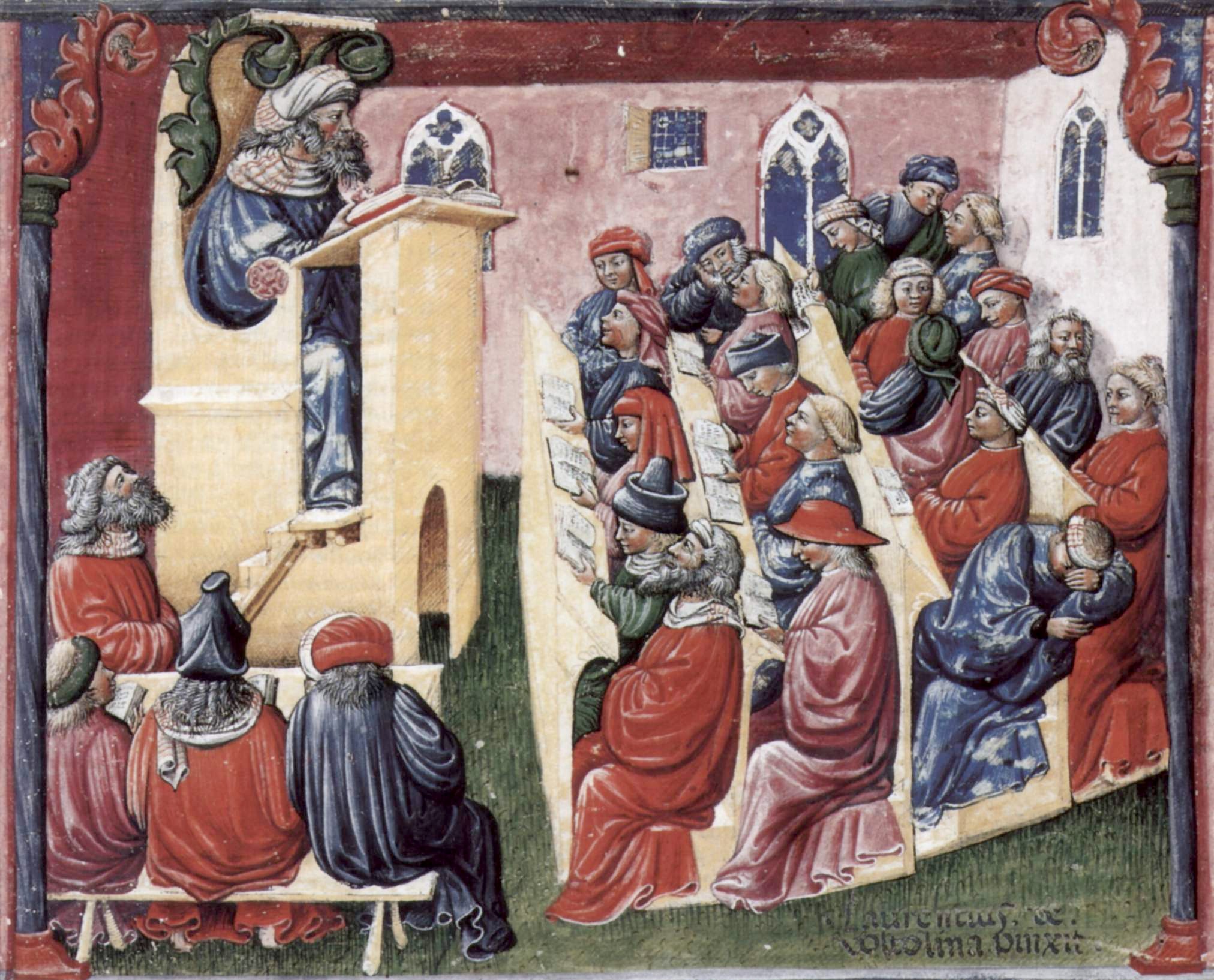|
Gabriele Sforza
Gabriele Sforza (born ''Carlo Sforza''; 1423–1457), was a member of the Augustinian Order who served as Archbishop of Milan from 1445 to his death in 1457. Family His father was Giacomo Muzio Attendolo, who had three marriages and sixteen children: one child with his first wife Antonia Salimbeni, three children with his second wife Caterina Alopo; two children (including Carlo) with his third wife Maria Marzani countess of Celano; and ten children with his mistresses Tamira di Cagli and Lucia Terzani da Marsciano. Muzio Attendolo earned the nickname Sforza ("Strong") on the battlefield, which became the family surname under his son Francesco I Sforza , who was the Duke of Milan from 1450 to 1466. Francesco I Sforza had as sibling Carlo, who took the religious name of ''Gabriele''. Biography Carlo, born on 15 June 1423, spent the early part of his life serving in the military, but soon grew tired of the secular life. He preferred studying the scriptures to fighting on th ... [...More Info...] [...Related Items...] OR: [Wikipedia] [Google] [Baidu] |
Archbishop Of Milan
The Archdiocese of Milan ( it, Arcidiocesi di Milano; la, Archidioecesis Mediolanensis) is a Latin Church ecclesiastical territory or archdiocese of the Catholic Church in Italy which covers the areas of Milan, Monza, Lecco and Varese. It has long maintained its own Latin liturgical rite usage, the Ambrosian rite, which is still used in the greater part of the diocesan territory. Among its past archbishops, the better known are Ambrose, Charles Borromeo, Pope Pius XI and Pope Paul VI. The Archdiocese of Milan is the metropolitan see of the ecclesiastical province of Milan, which includes the suffragan dioceses of Bergamo, Brescia, Como, Crema, Cremona, Lodi, Mantova, Pavia, and Vigevano."Archdiocese of Milano " '' |
Augustinian Friars
The Order of Saint Augustine, ( la, Ordo Fratrum Sancti Augustini) abbreviated OSA, is a religious mendicant order of the Catholic Church. It was founded in 1244 by bringing together several eremitical groups in the Tuscany region who were following the Rule of Saint Augustine, written by Saint Augustine of Hippo in the fifth century. They are also commonly known as the Augustinians or Austin friars, and were also historically known as the Order of Hermits of Saint Augustine (; abbreviated OESA). The order has, in particular, spread internationally the veneration of the Virgin Mary under the title of Our Lady of Good Counsel (''Mater boni consilii''). Background Augustine of Hippo, first with some friends and afterward as bishop with his clergy, led a monastic community life. Regarding the use of property or possessions, Augustine did not make a virtue of poverty, but of sharing. Their manner of life led others to imitate them. Instructions for their guidance were found in ... [...More Info...] [...Related Items...] OR: [Wikipedia] [Google] [Baidu] |
1457 Deaths
Year 1457 ( MCDLVII) was a common year starting on Saturday (link will display the full calendar) of the Julian calendar. Events January–December * February 11 – After years of captivity and absence from the Ming throne, the Zhengtong Emperor of China is reinstated, as the Tianshun Emperor. * February 24 – Charles VIII of Sweden is declared deposed. The Archbishop of Sweden, Jöns Bengtsson Oxenstierna, and statesman Erik Axelsson Tott become co-regents of Sweden. The throne is then offered to Christian I of Denmark and Norway. * March 6 – King James II of Scotland decrees that ". . . . . ", the first historical mention of the game of golf. * April 12 – Ştefan cel Mare secures the throne of Moldavia, which he retains for the next 47 years. * June 23 – Christian I is elected king of Sweden, ending the war between Sweden and Denmark and restoring the Kalmar Union. *June 29 – The Dutch city of Dordrecht is devastated by fire. * Au ... [...More Info...] [...Related Items...] OR: [Wikipedia] [Google] [Baidu] |
1423 Births
Fourteen or 14 may refer to: * 14 (number), the natural number following 13 and preceding 15 * one of the years 14 BC, AD 14, 1914, 2014 Music * 14th (band), a British electronic music duo * ''14'' (David Garrett album), 2013 *''14'', an unreleased album by Charli XCX * "14" (song), 2007, from ''Courage'' by Paula Cole Other uses * ''Fourteen'' (film), a 2019 American film directed by Dan Sallitt * ''Fourteen'' (play), a 1919 play by Alice Gerstenberg * ''Fourteen'' (manga), a 1990 manga series by Kazuo Umezu * ''14'' (novel), a 2013 science fiction novel by Peter Clines * ''The 14'', a 1973 British drama film directed by David Hemmings * Fourteen, West Virginia, United States, an unincorporated community * Lot Fourteen, redevelopment site in Adelaide, South Australia, previously occupied by the Royal Adelaide Hospital * "The Fourteen", a nickname for NASA Astronaut Group 3 * Fourteen Words, a phrase used by white supremacists and Nazis See also * 1/4 (other) * Fo ... [...More Info...] [...Related Items...] OR: [Wikipedia] [Google] [Baidu] |
Beatification
Beatification (from Latin ''beatus'', "blessed" and ''facere'', "to make”) is a recognition accorded by the Catholic Church of a deceased person's entrance into Heaven and capacity to intercede on behalf of individuals who pray in their name. ''Beati'' is the plural form, referring to those who have undergone the process of beatification; they possess the title of "Blessed" (abbreviation "Bl.") before their names and are often referred to in English as "a Blessed" or, plurally, "Blesseds". History Local bishops had the power of beatifying until 1634, when Pope Urban VIII, in the apostolic constitution ''Cœlestis Jerusalem'' of 6 July, reserved the power of beatifying to the Holy See. Since the reforms of 1983, as a rule, one miracle must be confirmed to have taken place through the intercession of the person to be beatified. Miracles are almost always unexplainable medical healings, and are scientifically investigated by commissions comprising physicians and theologia ... [...More Info...] [...Related Items...] OR: [Wikipedia] [Google] [Baidu] |
Francesco Solari
240px, ''Madonna with Child'', church of Sant'Angelo, Milan. Francesco Solari (c. 1415 – 1469) was an Italian sculptor, architect and engineer. He was born in Milan, the son of Giovanni Solari and the brother of Guiniforte Solari. Around 1445 he is known to be working in decorations for the church of the Villa in Castiglione Olona, the Duomo of Milan and the Certosa of Pavia, where Guiniforte was director of the works. Starting from 1460 he was master to Giovanni Antonio Amadeo 260px, Amadeo, Milan Cathedral 260px, The Colleoni Chapel in Bergamo. Giovanni Antonio Amadeo (c. 1447 – 27 or 28 August 1522) was an Italian Renaissance sculptor of the Early Renaissance, architect, and engineer. Biography Amadeo was born .... He died in Milan in 1469. 1410s births 1469 deaths 15th-century Italian architects 15th-century Italian sculptors Italian male sculptors Engineers from Milan Architects from Milan {{Italy-sculptor-stub ... [...More Info...] [...Related Items...] OR: [Wikipedia] [Google] [Baidu] |
Ospedale Maggiore
The Policlinico of Milan ( it, Policlinico di Milano) also known as Ospedale Maggiore di Milano or Ca' Granda Ospedale Maggiore Policlinico, is one of the oldest hospitals in Italy, founded by Duke Francesco Sforza in 1456. Today it is a modern hospital with 900 beds, with wards for adults, pregnant women and children. During the first COVID-19 breakout in March 2020, 300 of those beds were readapted for COVID-19 patients. There are three emergency rooms for different categories of patients. The maternity ward (Mangiagalli Clinic) has the highest number of births in Lombardy. The Foundation is a scientific Institute for Research, Hospitalization and Health Care (IRCCS), which means that, alongside clinical activity, it promotes research programs with predominantly translational purposes. The programs are concerned with the rapid transfer of therapies from the laboratory to patients. Organization As of 2020: *President: Marco Giachetti (appointment 2019–2023) *General Director ... [...More Info...] [...Related Items...] OR: [Wikipedia] [Google] [Baidu] |
Archdiocese Of Milan
The Archdiocese of Milan ( it, Arcidiocesi di Milano; la, Archidioecesis Mediolanensis) is a Latin Church ecclesiastical territory or archdiocese of the Catholic Church in Italy which covers the areas of Milan, Monza, Lecco and Varese. It has long maintained its own Latin liturgical rite usage, the Ambrosian rite, which is still used in the greater part of the diocesan territory. Among its past archbishops, the better known are Ambrose, Charles Borromeo, Pope Pius XI and Pope Paul VI. The Archdiocese of Milan is the metropolitan see of the ecclesiastical province of Milan, which includes the suffragan dioceses of Bergamo, Brescia, Como, Crema, Cremona, Lodi, Mantova, Pavia, and Vigevano."Archdiocese of Milano " '' |
Pope Nicholas V
Pope Nicholas V ( la, Nicholaus V; it, Niccolò V; 13 November 1397 – 24 March 1455), born Tommaso Parentucelli, was head of the Catholic Church and ruler of the Papal States from 6 March 1447 until his death in March 1455. Pope Eugene IV, Pope Eugene made him a Cardinal (Catholic Church), cardinal in 1446 after successful trips to Italy and Germany, and when Eugene died the next year, Parentucelli was elected in his place. He took his name Nicholas in memory of his obligations to Niccolò Albergati. The pontificate of Nicholas saw the fall of Constantinople to the Ottoman Turks and the end of the Hundred Years War. He responded by calling a crusade against the Ottomans, which never materialized. By the Concordat of Vienna he secured the recognition of papal rights over bishoprics and benefices. He also brought about the submission of the last of the antipopes, Felix V, and the dissolution of the Synod of Basel. A key figure in the Roman Renaissance, Nicholas sought to make Ro ... [...More Info...] [...Related Items...] OR: [Wikipedia] [Google] [Baidu] |
Scholastic Theology
Scholasticism was a medieval school of philosophy that employed a critical organic method of philosophical analysis predicated upon the Aristotelian 10 Categories. Christian scholasticism emerged within the monastic schools that translated scholastic Judeo—Islamic philosophies, and thereby "rediscovered" the collected works of Aristotle. Endeavoring to harmonize his metaphysics and its account of a prime mover with the Latin Catholic dogmatic trinitarian theology, these monastic schools became the basis of the earliest European medieval universities, and scholasticism dominated education in Europe from about 1100 to 1700. The rise of scholasticism was closely associated with these schools that flourished in Italy, France, Portugal, Spain and England. Scholasticism is a method of learning more than a philosophy or a theology, since it places a strong emphasis on dialectical reasoning to extend knowledge by inference and to resolve contradictions. Scholastic thought is ... [...More Info...] [...Related Items...] OR: [Wikipedia] [Google] [Baidu] |
Gospels
Gospel originally meant the Christian message ("the gospel"), but in the 2nd century it came to be used also for the books in which the message was set out. In this sense a gospel can be defined as a loose-knit, episodic narrative of the words and deeds of Jesus, culminating in Trial of Jesus, his trial and Crucifixion of Jesus, death and concluding with various reports of Post-resurrection appearances of Jesus, his post-resurrection appearances. Modern scholars are cautious of relying on the gospels uncritically, but nevertheless, they provide a good idea of the public career of Jesus, and critical study can attempt to distinguish the original ideas of Jesus from those of the later authors. The four canonical gospels were probably written between AD 66 and 110. All four were anonymous (with the modern names added in the 2nd century), almost certainly none were by eyewitnesses, and all are the end-products of long Oral tradition, oral and written transmission. Gospel of Mark, Mark ... [...More Info...] [...Related Items...] OR: [Wikipedia] [Google] [Baidu] |
_by_shakko.jpg)



.jpg)

